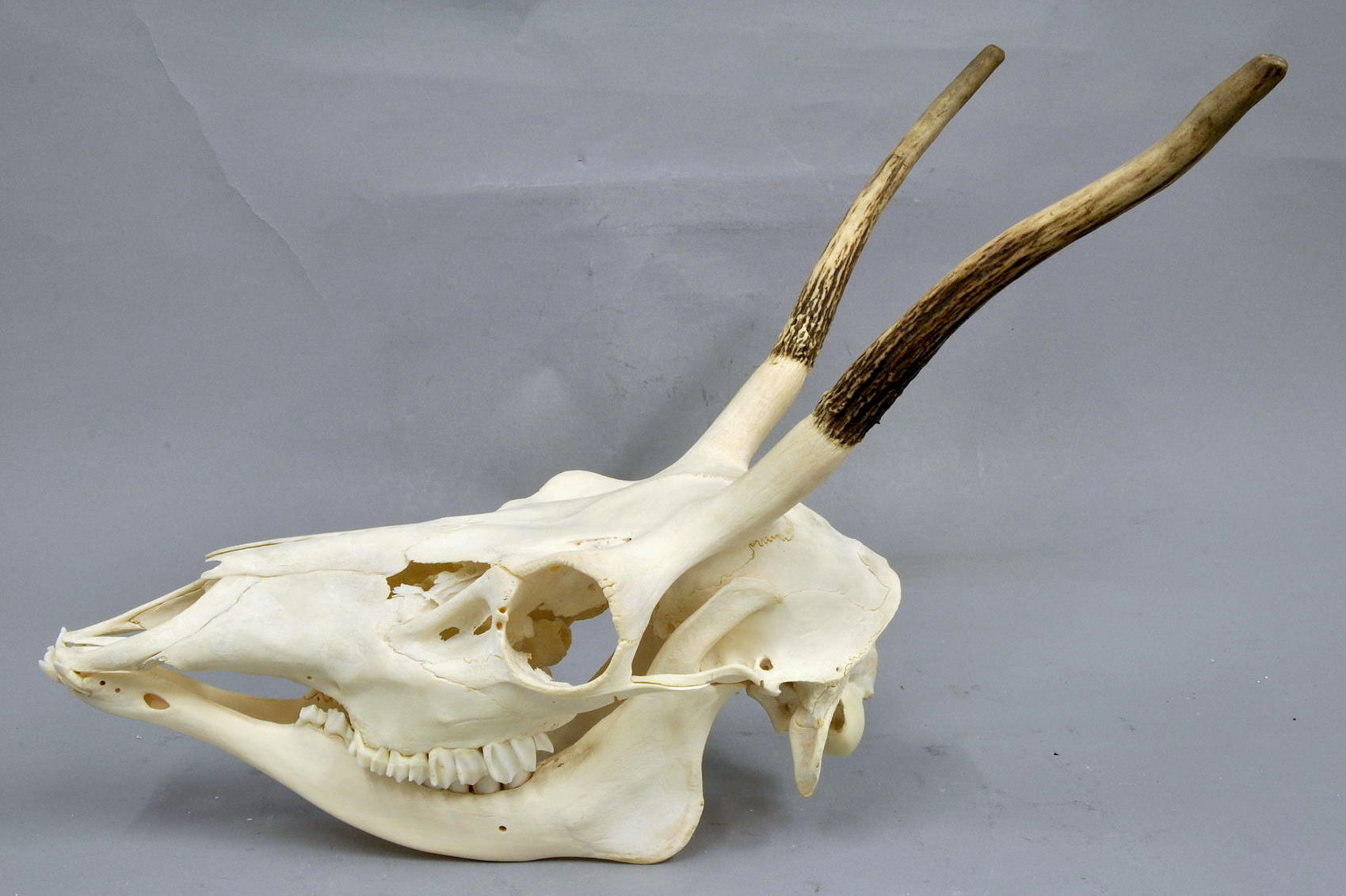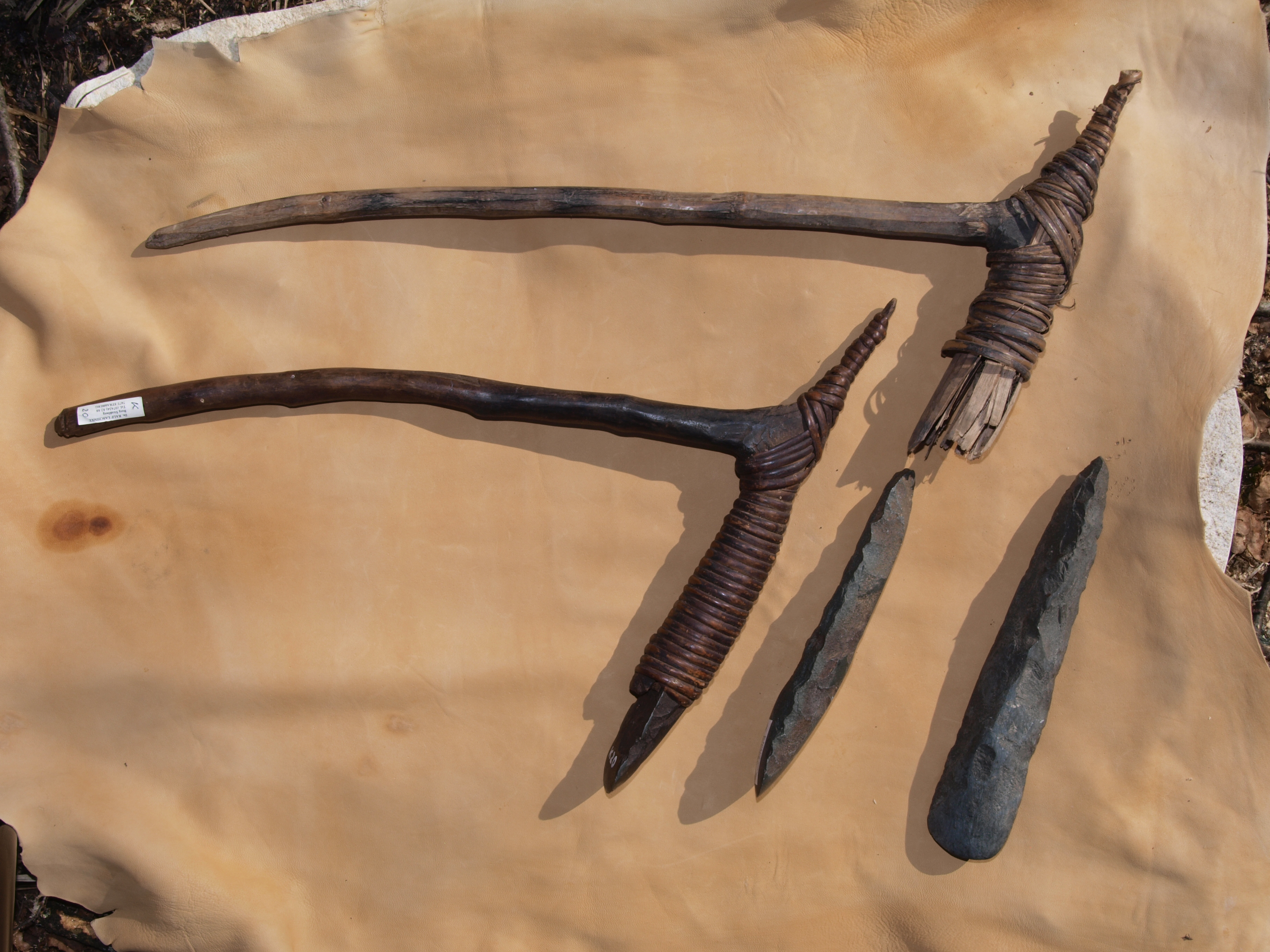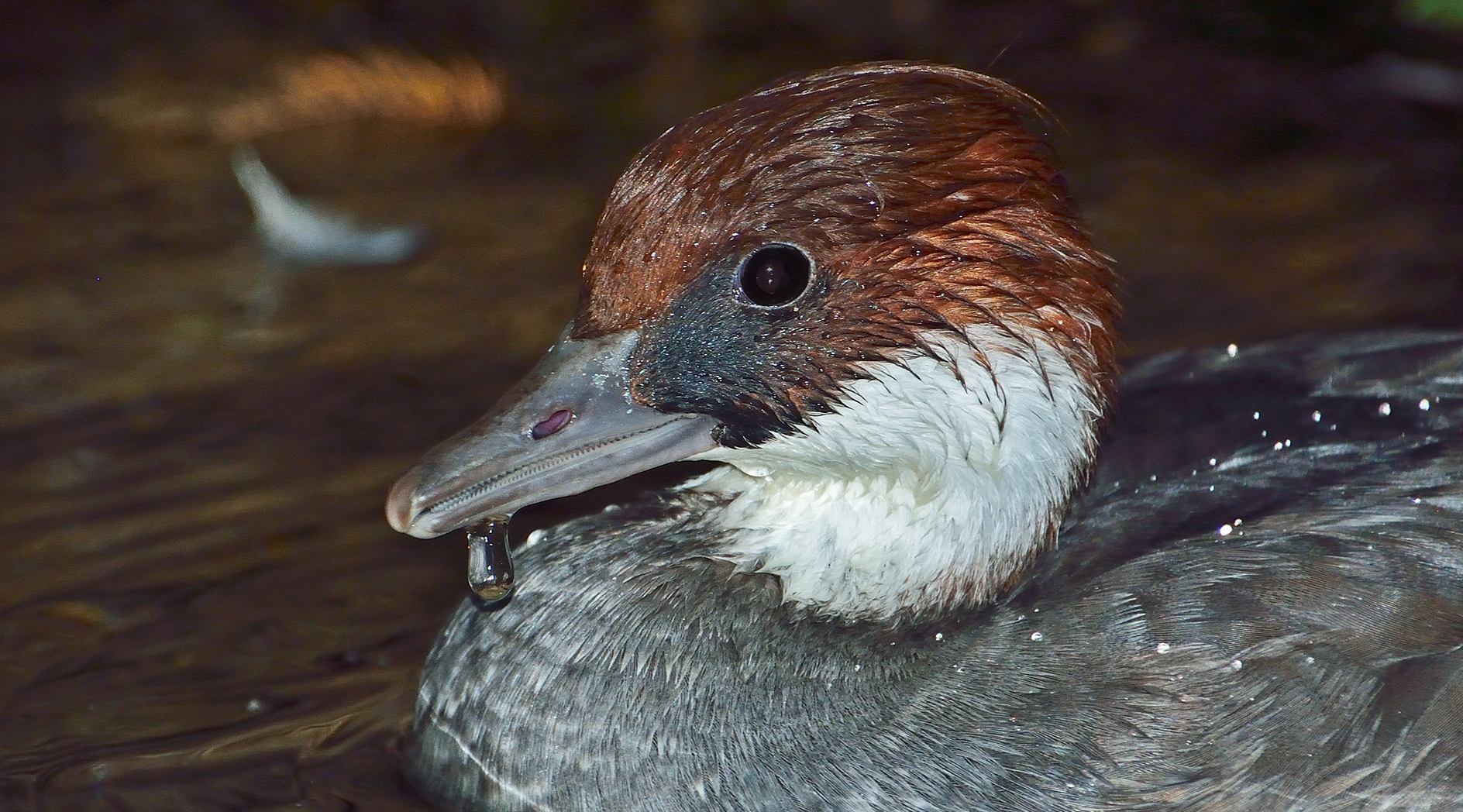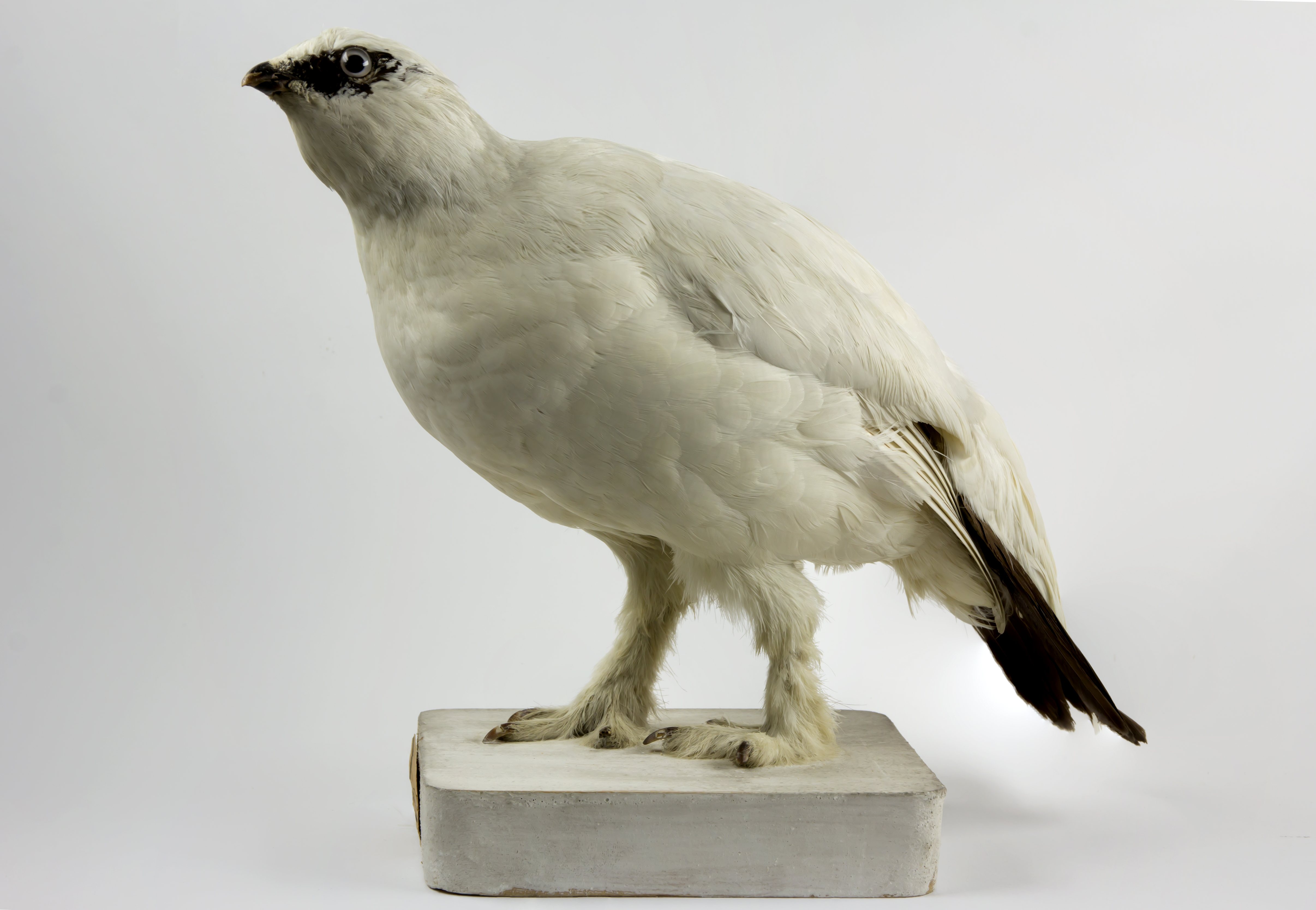|
Caves Of Kesh
The Caves of Kesh, also known as the Keash Caves or the Caves of Keshcorran (), are a series of limestone caves located near the village of Keash, County Sligo, Ireland. The caves are situated on the west side of Keshcorran Hill (part of the Bricklieve Mountains) and consist of sixteen simple chambers, some interconnecting. The caves have been used by man over several millennia, and it has long been suggested that they were the site of ancient religious practice or gathering such as Lughnasadh. Excavations carried out in the early 20th century, particularly those by Robert Francis Scharff, discovered significant animal remains. Among others, these included bones of brown bear, arctic lemming, Irish elk, and grey wolf. Geology The sixteen interconnecting caves of white cherty limestone are found at the base of a line of low cliffs, on the western slope of the hill. They were formed from the atmospheric weathering of carboniferous limestone, and run perpendicular to the rock ... [...More Info...] [...Related Items...] OR: [Wikipedia] [Google] [Baidu] |
County Sligo
County Sligo ( , ) is a Counties of Ireland, county in Republic of Ireland, Ireland. It is in the Northern and Western Region and is part of the Provinces of Ireland, province of Connacht. Sligo is the administrative capital and largest town in the county. Sligo County Council is the Local government in the Republic of Ireland, local authority for the county. The population of the county was 70,198 at the 2022 census of Ireland, 2022 census. It is noted for Benbulben Mountain, one of Ireland's most distinctive natural landmarks. History The county was officially formed in 1585 by Sir Henry Sidney, Lord Deputy of Ireland, but did not come into effect until the chaos of the Nine Years' War (Ireland), Nine Years' War ended, in 1603. Its boundaries reflect the Ó Conchobhair Sligigh confederation of Lower Connacht () as it was at the time of the Elizabethan conquest. This confederation consisted of the tuatha, or territories, of Cairbre Drom Cliabh, Cairbre Drumcliabh, Tír Fhíacr ... [...More Info...] [...Related Items...] OR: [Wikipedia] [Google] [Baidu] |
Red Deer
The red deer (''Cervus elaphus'') is one of the largest deer species. A male red deer is called a stag or Hart (deer), hart, and a female is called a doe or hind. The red deer inhabits most of Europe, the Caucasus Mountains region, Anatolia, Iran, and parts of western Asia. It also inhabits the Atlas Mountains of Northern Africa, being the only living species of deer to inhabit Africa. Red deer have been introduced to other areas, including Australia, New Zealand, the United States, Canada, Peru, Uruguay, Chile and Argentina. In many parts of the world, the meat (venison) from red deer is used as a food source. The red deer is a ruminant, characterized by a four-chambered stomach. Genetics, Genetic evidence indicates that the red deer, as traditionally defined, is a species group, rather than a single species, though exactly how many species the group includes remains disputed. The ancestor of the red deer probably originated in central Asia. Although at one time red deer were ... [...More Info...] [...Related Items...] OR: [Wikipedia] [Google] [Baidu] |
Adze
An adze () or adz is an ancient and versatile cutting tool similar to an axe but with the cutting edge perpendicular to the handle rather than parallel. Adzes have been used since the Stone Age. They are used for smoothing or carving wood in hand woodworking, and as a Hoe (tool), hoe for agriculture and horticulture. Two basic forms of an adze are the hand adze (short hoe)—a short-handled tool swung with one hand—and the foot adze (hoe)—a long-handled tool capable of powerful swings using both hands, the cutting edge usually striking at foot or shin level. A similar tool is called a mattock, which differs by having two blades, one perpendicular to the handle and one parallel. History Africa The adze is depicted in ancient Egyptian art from the Old Kingdom onward. Originally the adze blades were made of stone, but already in the Predynastic Egypt, Predynastic Period copper adzes had all but replaced those made of flint. Stone blades were fastened to the handle by tying ... [...More Info...] [...Related Items...] OR: [Wikipedia] [Google] [Baidu] |
Celt (tool)
In archaeology, a celt is a long, thin, prehistoric, stone or bronze tool similar to an adze, hoe, or axe. A shoe-last celt was a polished stone tool used during the early European Neolithic for felling trees and woodworking. Etymology The term "celt" seems to have come about from a copyist's error in many medieval manuscript copies of Job 19:24 in the Latin Vulgate Bible, which became enshrined in the authoritative Sixto-Clementine printed edition of 1592. Where all earlier versions (the Codex Amiatinus, for example) have ''vel certe'' (the Latin for 'but surely'), the Sixto-Clementine has ''vel celte''. The Hebrew has לעד (''lā‘aḏ'') at this point, which means 'forever'. The editors of the Oxford English Dictionary " nclineto the belief that ''celtis'' was a phantom word", simply a misspelling of ''certe''. However, some scholars over the years have treated ''celtis'' as a real Latin word. From the context of Job 19:24 ("Oh, that my words were inscribed with an ... [...More Info...] [...Related Items...] OR: [Wikipedia] [Google] [Baidu] |
Humerus
The humerus (; : humeri) is a long bone in the arm that runs from the shoulder to the elbow. It connects the scapula and the two bones of the lower arm, the radius (bone), radius and ulna, and consists of three sections. The humeral upper extremity of humerus, upper extremity consists of a rounded head, a narrow neck, and two short processes (tubercles, sometimes called tuberosities). The body of humerus, body is cylindrical in its upper portion, and more prism (geometry), prismatic below. The lower extremity of humerus, lower extremity consists of 2 epicondyles, 2 processes (trochlea of the humerus, trochlea and capitulum of the humerus, capitulum), and 3 fossae (radial fossa, coronoid fossa, and olecranon fossa). As well as its true anatomical neck, the constriction below the greater and lesser tubercles of the humerus is referred to as its Surgical neck of the humerus, surgical neck due to its tendency to fracture, thus often becoming the focus of surgeons. Etymology The word ... [...More Info...] [...Related Items...] OR: [Wikipedia] [Google] [Baidu] |
Neolithic
The Neolithic or New Stone Age (from Ancient Greek, Greek 'new' and 'stone') is an archaeological period, the final division of the Stone Age in Mesopotamia, Asia, Europe and Africa (c. 10,000 BCE to c. 2,000 BCE). It saw the Neolithic Revolution, a wide-ranging set of developments that appear to have arisen independently in several parts of the world. This "Neolithic package" included the History of agriculture, introduction of farming, domestication of animals, and change from a hunter-gatherer lifestyle to one of sedentism, settlement. The term 'Neolithic' was coined by John Lubbock, 1st Baron Avebury, Sir John Lubbock in 1865 as a refinement of the three-age system. The Neolithic began about 12,000 years ago, when farming appeared in the Epipalaeolithic Near East and Mesopotamia, and later in other parts of the world. It lasted in the Near East until the transitional period of the Chalcolithic (Copper Age) from about 6,500 years ago (4500 BCE), marked by the development ... [...More Info...] [...Related Items...] OR: [Wikipedia] [Google] [Baidu] |
Little Auk
The little auk (Europe) or dovekie (North America) ''Alle alle'' is a small auk, the only member of the genus ''Alle''. ''Alle'' is the Sami name of the long-tailed duck; it is onomatopoeic and imitates the call of the drake duck. Linnaeus was not particularly familiar with the winter plumages of either the auk or the duck, and appears to have confused the two species. Other old names include rotch, rotche, bullbird, and sea dove, although the latter sometimes refers to a relative, the black guillemot. They breed on islands in the high Arctic. There are two subspecies; ''A. a. alle'' breeds in Greenland, Novaya Zemlya and Svalbard; and ''A. a. polaris'' on Franz Josef Land. A small number of individuals Little Diomede Island in the Bering Strait with additional breeding individuals thought to occur on King Island, St. Lawrence Island, St. Matthew Island and the Pribilof Islands in the Bering Sea. They also formerly bred on Grímsey just north of Iceland, but are extinct the ... [...More Info...] [...Related Items...] OR: [Wikipedia] [Google] [Baidu] |
Smew
The smew (''Mergellus albellus'') is a species of duck and is the only living member of the genus ''Mergellus''. ''Mergellus'' is a diminutive of ''Mergus'' and ''albellus'' is from Latin ''albus'' "white". This genus is closely related to ''Mergus'' and is sometimes included in it, though it might be closer to the goldeneyes (''Bucephala''). The smew has hybridized with the common goldeneye (''B. clangula''). Etymology The smew was formally described in 1758 by the Swedish naturalist Carl Linnaeus in the tenth edition of his ''Systema Naturae'' under the binomial name ''Mergus albellus''. Linnaeus based his account on the description published in 1757 by another Swedish naturalist, Fredrik Hasselqvist. Linnaeus specified the type locality as Europe but this was restricted to the Mediterranean near İzmir in Turkey. The smew is now the only living species placed in the genus '' Mergellus'' that was introduced in 1840 by the English naturalist Prideaux Selby. The species is ... [...More Info...] [...Related Items...] OR: [Wikipedia] [Google] [Baidu] |
Rock Ptarmigan
The rock ptarmigan (''Lagopus muta'') is a medium-sized game bird in the grouse family. It is known simply as the ptarmigan in Europe. It is the official bird for the Canadian territory of Nunavut, where it is known as the ''aqiggiq'' (ᐊᕿᒡᒋᖅ), and the official game bird for the province of Newfoundland and Labrador. In Japan, it is known as the ''raichō'' (雷鳥), which means "thunder bird". It is the official bird of Gifu, Nagano, and Toyama Prefectures and is a protected species nationwide. Unlike many arctic bird species, ptarmigan do not gain substantial mass to hibernate over winter. Etymology The ptarmigan's genus name, ''Lagopus'', is derived from Ancient Greek ''lagos'' (λαγώς ''lagṓs''), meaning "hare", + ''pous'' (πούς ''poús''), "foot", in reference to the bird's feathered legs. The species name, ''muta'', comes from Neo-Latin and means "mute", referring to the simple croaking song of the male. It was for a long time misspelt ''mutus'', in t ... [...More Info...] [...Related Items...] OR: [Wikipedia] [Google] [Baidu] |
Mollusca
Mollusca is a phylum of protostome, protostomic invertebrate animals, whose members are known as molluscs or mollusks (). Around 76,000 extant taxon, extant species of molluscs are recognized, making it the second-largest animal phylum after Arthropoda. The number of additional fossil species is estimated between 60,000 and 100,000, and the proportion of undescribed species is very high. Many taxa remain poorly studied. Molluscs are the largest marine biology, marine phylum, comprising about 23% of all the named marine organisms. They are highly diverse, not just in size and anatomical structure, but also in behaviour and habitat, as numerous groups are freshwater mollusc, freshwater and even terrestrial molluscs, terrestrial species. The phylum is typically divided into 7 or 8 taxonomy (biology), taxonomic class (biology), classes, of which two are entirely extinct. Cephalopod molluscs, such as squid, cuttlefish, and octopuses, are among the most neurobiology, neurologi ... [...More Info...] [...Related Items...] OR: [Wikipedia] [Google] [Baidu] |
Arctic Lemming
The Arctic lemming (''Dicrostonyx torquatus'') is a species of rodent in the family Cricetidae. Although generally classified as a "least concern" species, the Novaya Zemlya subspecies ''(Dicrostonyx torquatus ungulatus)'' is considered a vulnerable species under Russian nature conservation legislation (included in Red Book of Russian Federation since 1998). Biology It is found only in the Arctic biomes in the Russian Federation, and it is the most common mammal on Severnaya Zemlya. Specimens were once found in England, but they are now extirpated. For the most part, lemmings of the genus ''Lemmus'' can coexist with those of genus ''Dicrostonyx''. Arctic lemmings migrate when population density becomes too great, and they resort to swimming in search of a new habitat. The disappearance of lemmings and the lemming cycles in the Arctic have shown that they are the causes of fluctuations in local breeding among geese and waders. Recovery of lemmings after years of low density is ... [...More Info...] [...Related Items...] OR: [Wikipedia] [Google] [Baidu] |
Stoat
The stoat (''Mustela erminea''), also known as the Eurasian ermine or ermine, is a species of mustelid native to Eurasia and the northern regions of North America. Because of its wide circumpolar distribution, it is listed as Least Concern on the IUCN Red List. The name ermine () is used especially in its pure white winter coat of the stoat or its fur. Ermine fur was used in the 15th century by Catholic monarchs, who sometimes used it as the mozzetta cape. It has long been used on the ceremonial robes of members of the United Kingdom House of Lords. It was also used in capes on images such as the Infant Jesus of Prague. The stoat was introduced into New Zealand in the late 19th century to control rabbits. However, they have had a devastating effect on native bird populations; as such, the species was nominated as one of the world's top 100 "worst invaders". Etymology The root word for "stoat" is likely either the Dutch word ("bold") or the Gothic word (, "to push"). Accor ... [...More Info...] [...Related Items...] OR: [Wikipedia] [Google] [Baidu] |







